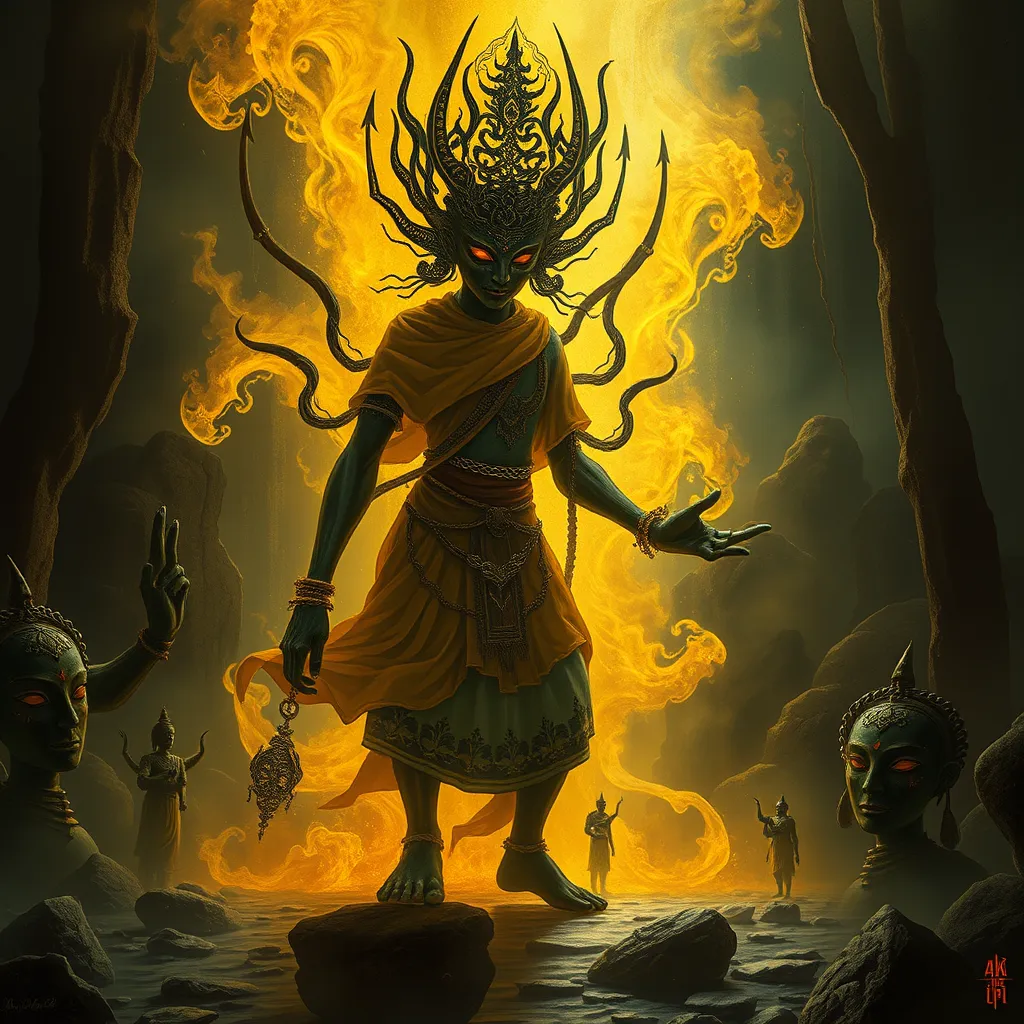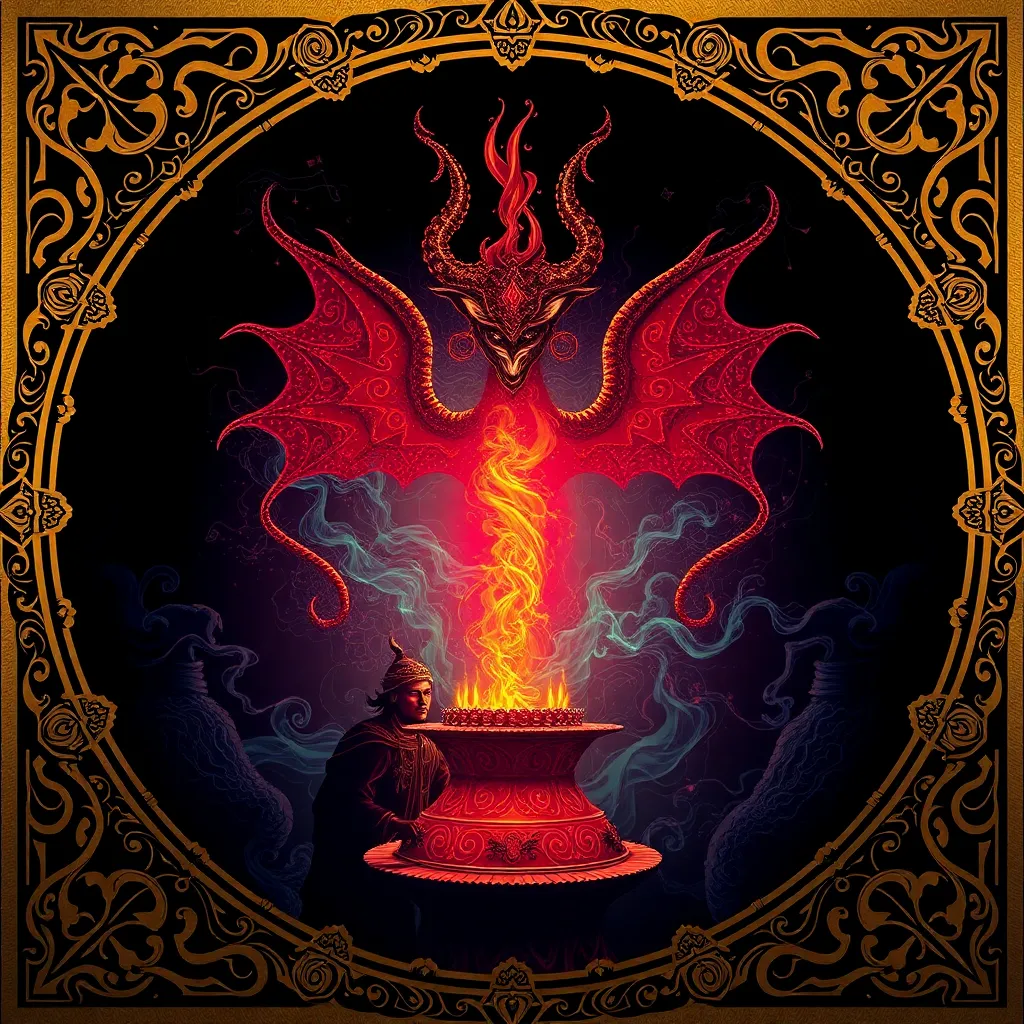Scales and Spells: Unraveling the Naga in Buddhist Legends
I. Introduction
The Naga is a prominent figure in Buddhist mythology, deeply rooted in the cultural and spiritual landscapes of many Asian societies. These serpent-like beings, often depicted with divine features, hold significant meanings within the context of Buddhism, representing both physical and metaphysical realms.
This article aims to explore the multifaceted roles of the Naga in Buddhist legends, shedding light on their origins, characteristics, and the cultural practices surrounding them. Through this exploration, we will understand the enduring relevance of these enigmatic beings in contemporary spiritual contexts.
II. The Origins of Naga in Buddhist Tradition
The concept of Naga predates Buddhism, with historical roots found in ancient Indian religions and folklore. Initially, Nagas were associated with water bodies, fertility, and rain, often perceived as guardians of treasures hidden in the earth and under the waters.
As Buddhism emerged, Naga mythology transitioned into its texts, adapting to the new religious framework while retaining many of its original attributes. Key Buddhist scriptures, including the Pali Canon and various Jataka tales, frequently reference Nagas, illustrating their integral role in Buddhist cosmology.
Key texts and scriptures mentioning Nagas
- The Pali Canon
- The Dhammapada
- Various Jataka tales
- The Lotus Sutra
III. Characteristics and Symbolism of the Naga
Nagas are depicted with unique physical attributes that set them apart from other mythological beings. Typically, they are portrayed as serpentine figures, often possessing human-like features or upper bodies.
In terms of symbolism, Nagas represent:
- Protection: They are seen as guardians of the Buddha and the Dharma.
- Wisdom: Nagas are often depicted as wise beings who possess profound knowledge.
- Fertility: Their association with water links them to fertility and the nurturing aspects of nature.
However, the Naga also embodies duality, existing as both benevolent protectors and malevolent forces, depending on their depiction in various narratives.
IV. The Role of Naga in Buddhist Legends
Nagas play a crucial role as protectors of the Dharma, often intervening in human affairs to safeguard Buddhist teachings. One notable figure is Mucalinda, the Naga king who famously sheltered the Buddha from rain during his meditation.
Other significant Naga figures include:
- Naga King: A symbol of power and protection, often depicted in the context of Buddhist art.
- Vessantara Jataka: A story where Nagas assist in the rebirth of a noble king.
Legends showcasing Naga interactions with the Buddha emphasize their protective nature and their ability to understand and embody the teachings of Buddhism.
V. Naga in Buddhist Art and Iconography
The depiction of Nagas in Buddhist art is rich and varied, with sculptures and paintings illustrating their prominent features. They are often portrayed coiling around stupas or as part of elaborate altarpieces.
In temple architecture, Naga motifs are common, symbolizing protection and sanctity. The significance of Naga imagery can be seen in:
- Entrance gates of temples, where Nagas guard the sacred spaces.
- Reliefs and murals depicting the life of the Buddha, showing interactions with Nagas.
- Regional variations, where Nagas are depicted differently across cultures, reflecting local beliefs and artistic styles.
VI. Naga Rituals and Worship Practices
Modern-day rituals honoring Nagas vary across Buddhist traditions, often reflecting ancient practices intertwined with contemporary beliefs. In some cultures, specific festivals are dedicated to Nagas, celebrating their significance and seeking their blessings.
Some notable practices include:
- Offering ceremonies during specific lunar phases to appease the Nagas.
- Rituals involving water, emphasizing their connection to fertility and abundance.
- Celebrations during Naga Panchami, a festival dedicated to the worship of Nagas.
Nagas also play a role in meditation and spiritual practices, where practitioners invoke their protective energies for guidance and wisdom.
VII. The Naga in Contemporary Culture
Naga mythology continues to influence popular media and literature, appearing in films, novels, and art. This resurgence highlights the adaptability of Naga symbolism in the modern world.
In Southeast Asian cultures, Nagas often serve as symbols of identity, representing cultural heritage and pride. Their portrayal in contemporary narratives reflects ongoing relevance in Buddhist teachings, as they embody the complexities of human nature and the spiritual journey.
VIII. Conclusion
In summary, the Naga in Buddhist legends is a multifaceted figure steeped in history and symbolism. From their origins in ancient traditions to their enduring presence in contemporary culture, Nagas embody the duality of existence, serving as both protectors and challengers of the Dharma.
Understanding the significance of Nagas in Buddhist mythology offers insights into the cultural and spiritual landscapes of Buddhist communities. As we reflect on their enduring legacy, it becomes clear that the Naga continues to inspire and teach valuable lessons about protection, wisdom, and the intricacies of life.



